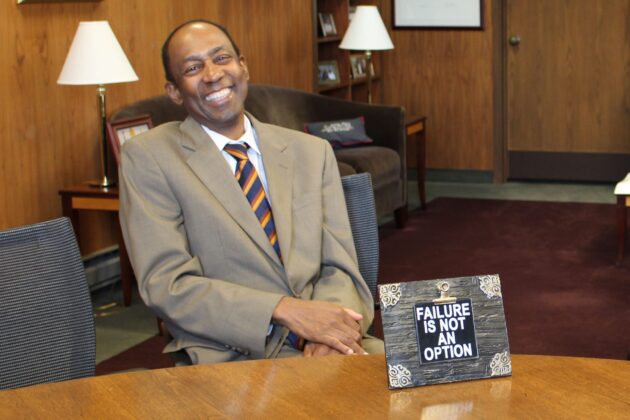Chief Judge Lee Satterfield: ‘If you’re going to make a change, ride it out’

Judge Lee Satterfield was appointed to the DC Superior Court in 1992. It was the height of the crack cocaine epidemic, a time when DC’s murder rate was the highest in the nation.
From his position as one of the nation’s first drug court judges, he saw addiction sweep through families and entire neighborhoods.
“Families were being torn apart by addiction. Children were being taken because of addiction,” he says.
“And abuse and neglect cases began to mushroom.”
The DC courts struggled to keep up with the growing number of children who had been removed from their families.
“Most judges were ill prepared. Our system was broken. We only had two judges [overseeing abuse and neglect cases] and they rotated every three-to-six months. Then we had this influx of family cases, about 1,400 a year, which were assigned to associate judges without any training…and we would try to squeeze these cases in at 4pm or whenever we could. It was a disservice to those cases and to the children.”
Finally, tragedy struck.
“It was the perfect storm and something had to break. And the thing that broke was the Brianna case,” he says.
Judge Satterfield recalls the case of Brianna Blackmond. Without holding a hearing, a judge ordered to return Brianna to her birth mother from foster care. Brianna, just shy of her second birthday, died two weeks later from a severe beating. Her godmother was later convicted of her murder.
“There was plenty of blame to go around,” Judge Satterfield says. “The court wasn’t functioning well…the child welfare agency back then was very weak and people weren’t being held accountable…and the lawyering wasn’t strong back then in family court.”
With the tragedy came increased scrutiny of DC’s child welfare agency and Superior Court. It led the U.S. Congress to pass the 2001 District of Columbia Family Court Act, which created and funded a new Family Court to overhaul how abuse and neglect cases were handled.
Judge Satterfield became the presiding judge of the new Family Court.
The act brought additional resources to help the Family Court handle the large number of cases, created a new ‘one family, one judge’ rule which mandated that cases involving members of the same family had to be heard by one judge, and required judges to stay in Family Court for five years on the theory that they would become more expert on family law issues.
The Family Court Act also allowed the DC Superior Court to address the lack of well-trained attorneys available to look out for the best interest of children removed from their families. Following the model of the criminal court’s Public Defender Service, in 2003 the Court awarded Children’s Law Center a contract to represent children in abuse and neglect cases.
“As judges, we knew we are only as good as the information we got [about what was actually happening in a child’s life]. And we had to rely on others to give us that information. We knew that a Children’s Law Center was important so we had a stronger bar and could get good information,” he says.
Today, judges appoint Children’s Law Center lawyers to represent more than 500 children each year whose parents have been accused of abuse and neglect. And we help even more children at risk of neglect or already in foster care when their grandparents, relatives and foster parents contact us about adoption, custody or guardianship.
Children’s Law Center has grown to help more than 5,000 children and families each year – almost 30,000 since we were founded in 1996.
“We count you as one of our accomplishments,” Judge Satterfield says with a laugh.
Flash forward to today. So much has changed for the better for the District’s children.
There are far fewer children in foster care than ever before, the result of improved efforts to find extended family members who can care for children when their parents can’t. And, today, children who are brought into foster care are less likely to languish.
“We organized the court better. We improved the lawyering. And the city got more serious and brought in a more competent director of the child welfare agency,” Satterfield says.
“It’s absolutely a better city for kids,” he says.
A proven leader and manager, Judge Satterfield was appointed Chief Judge of the DC Superior Court in 2008. His four-year term was renewed in 2012 and will end this year, at which time he is retiring.
He reflects on the many changes he’s seen – and led – over his time as a judge.
“We still have some things to work on but having lived here my whole life and being in the court for 20 years, things are so much better.”
At Children’s Law Center, we couldn’t agree more. And we thank Judge Satterfield for his leadership in improving the District for children.
His advice to those like him who are looking to make a difference?
“If you are going to make a change and it’s the right thing to do, ride it out. Eventually people will forget that they were against it.”
